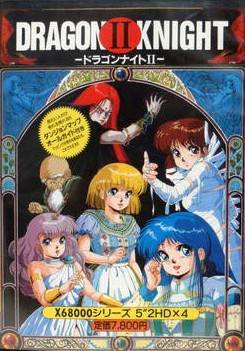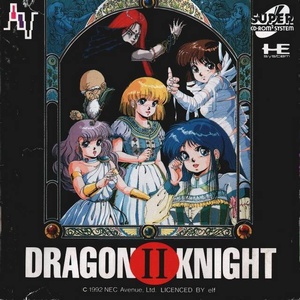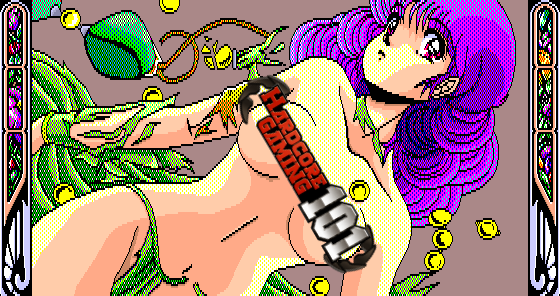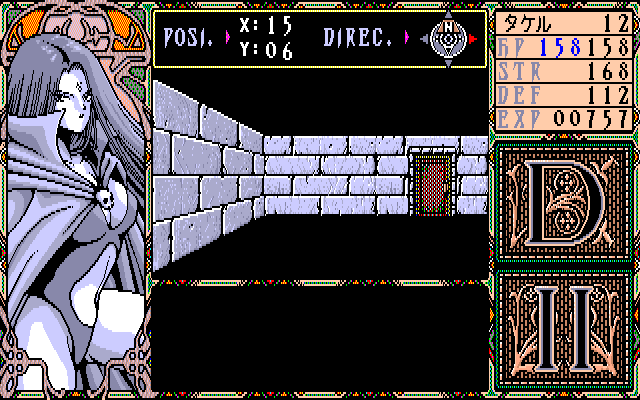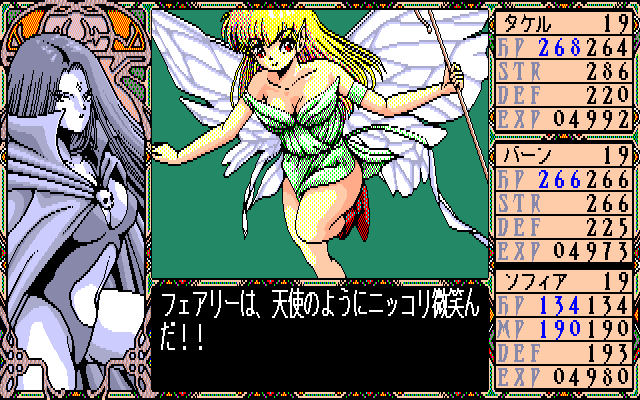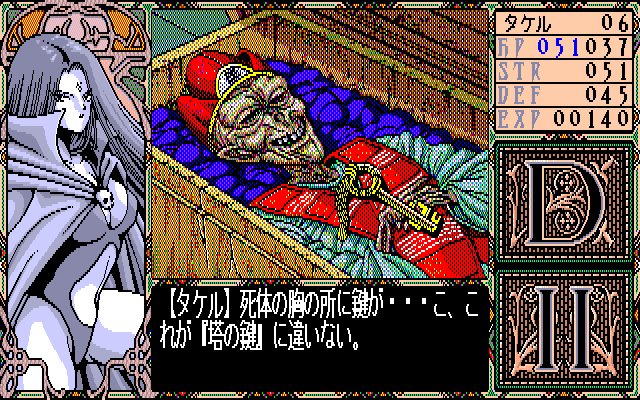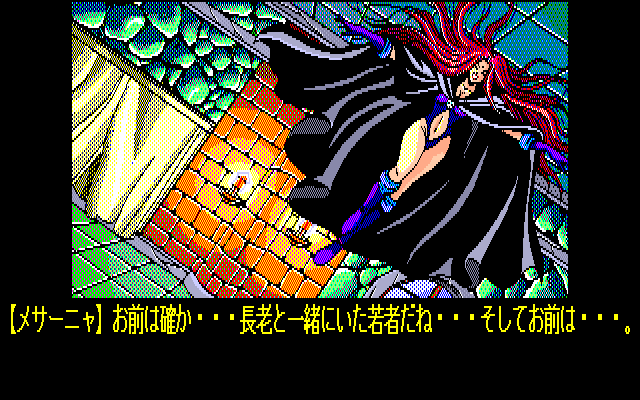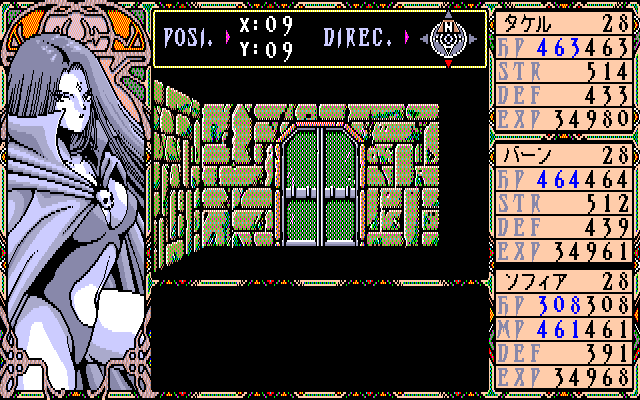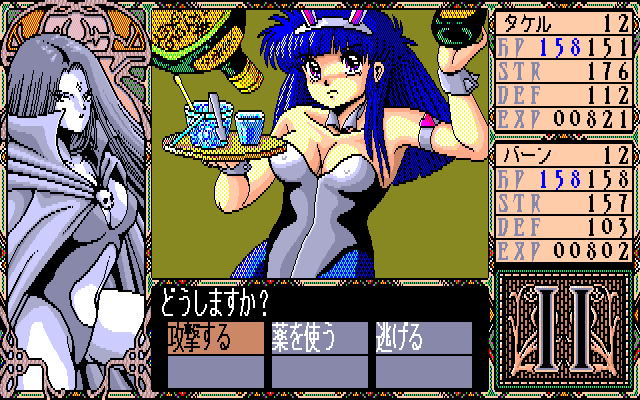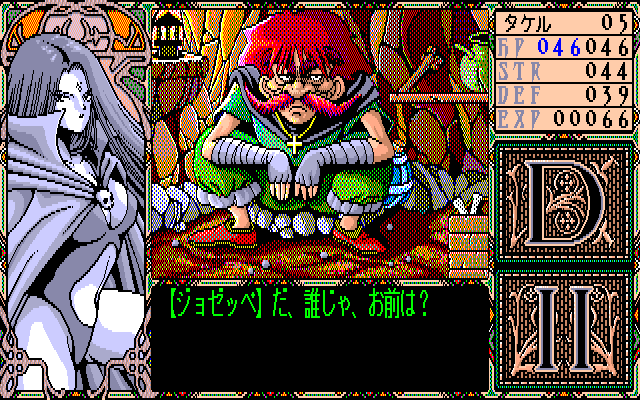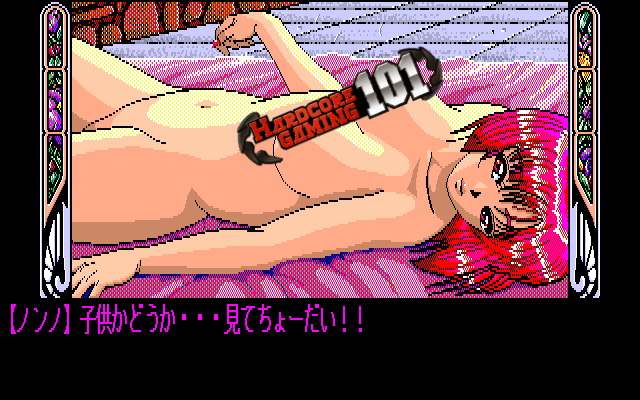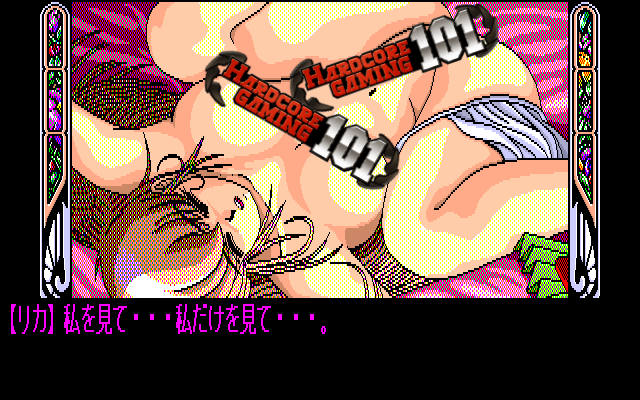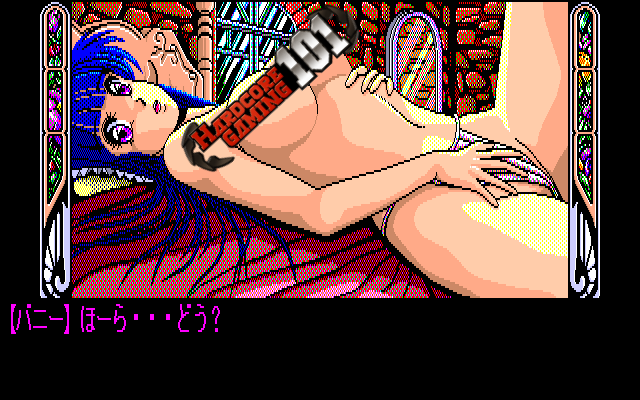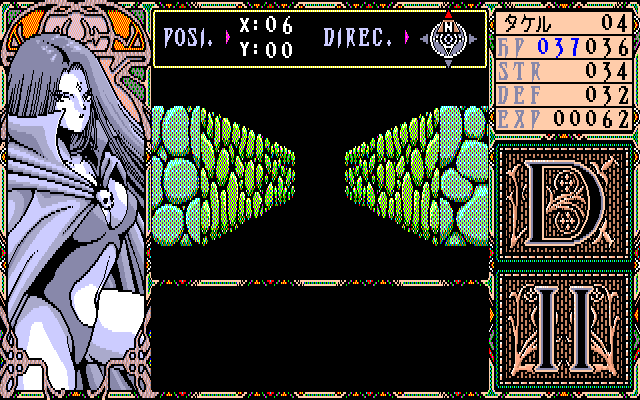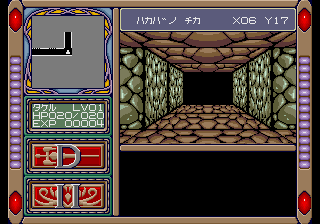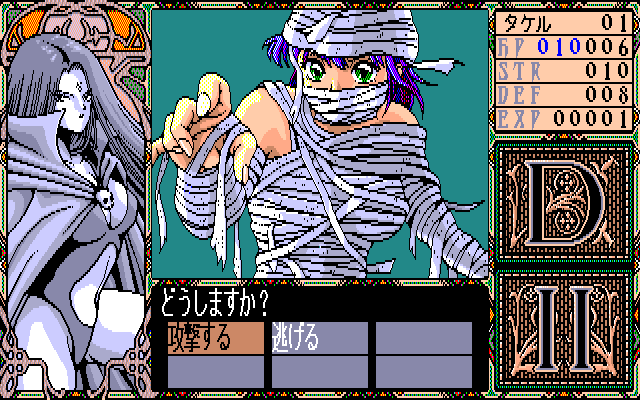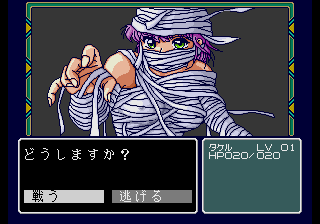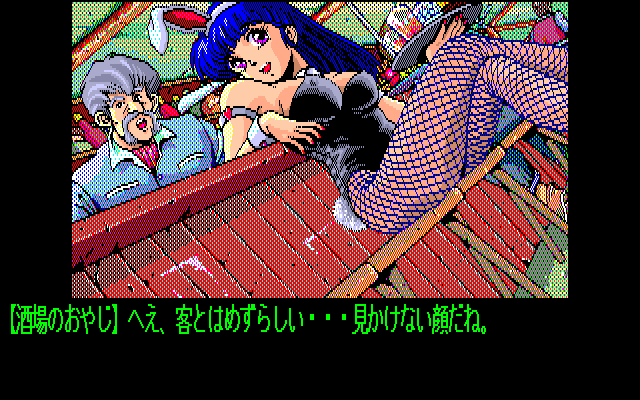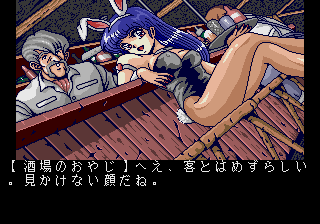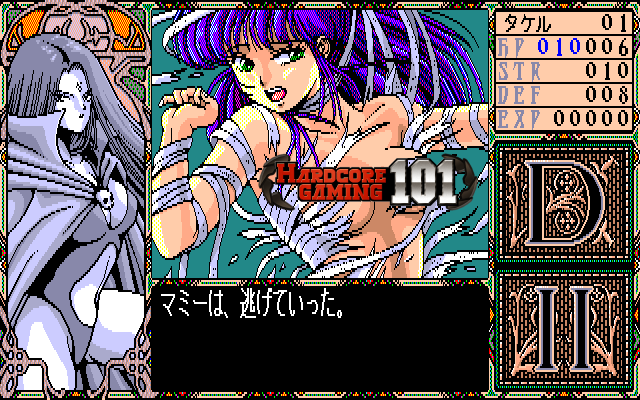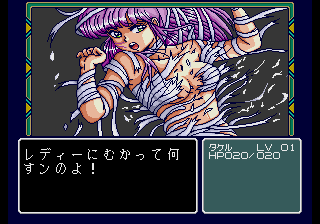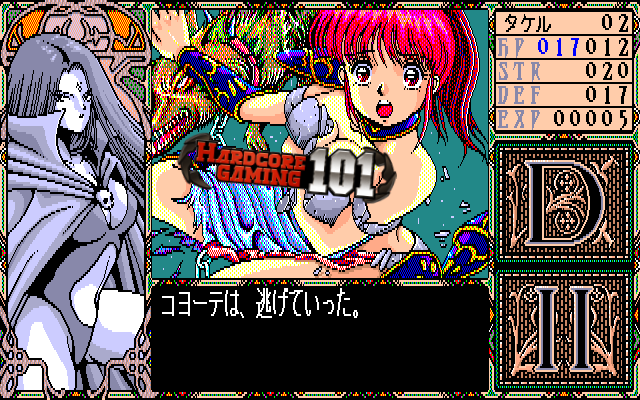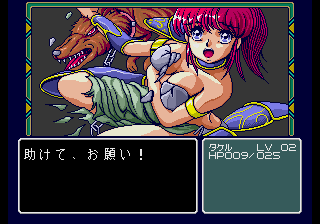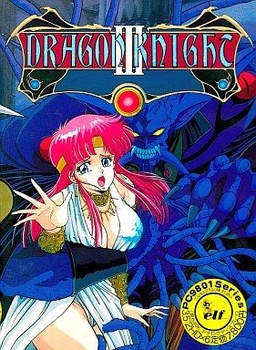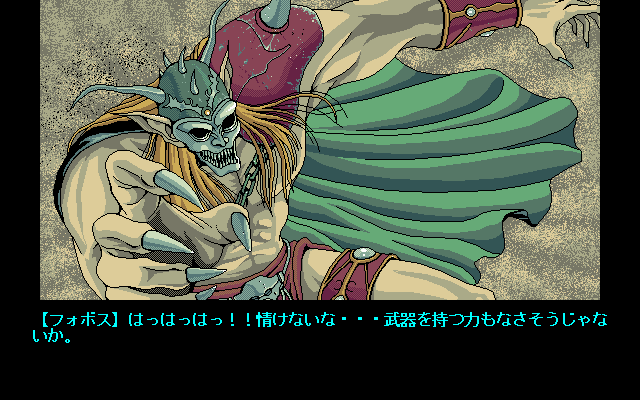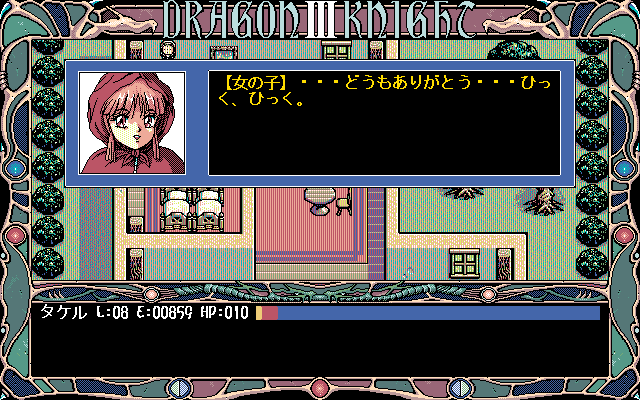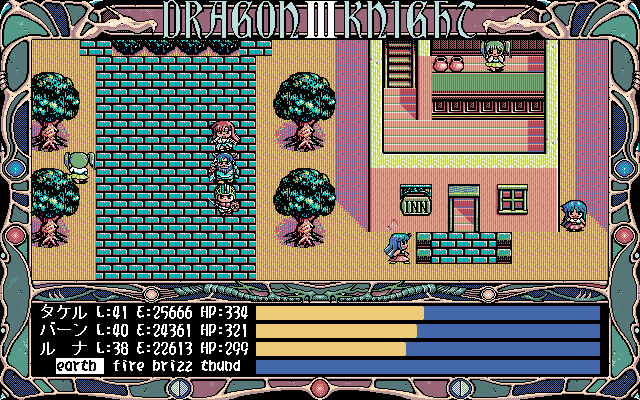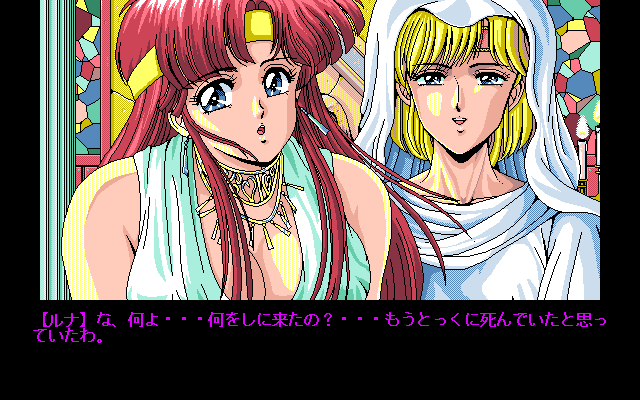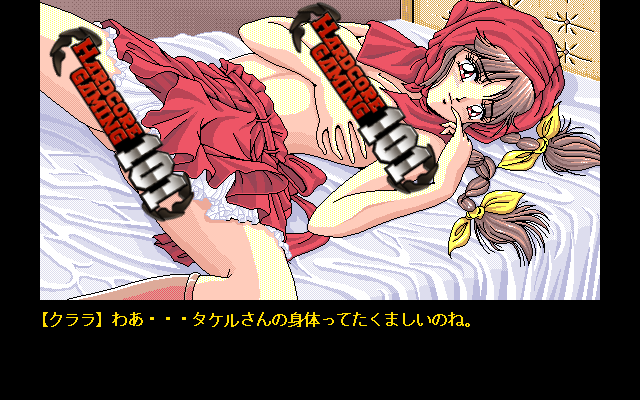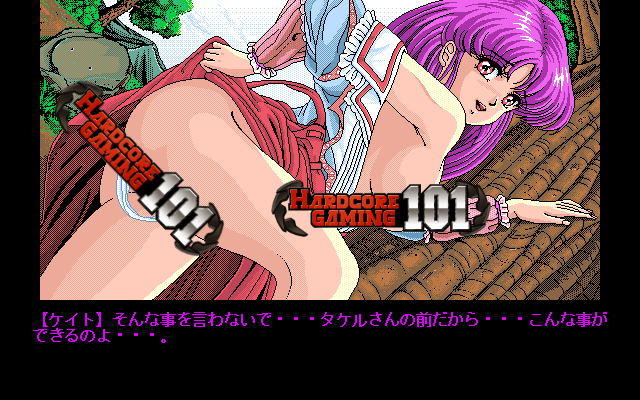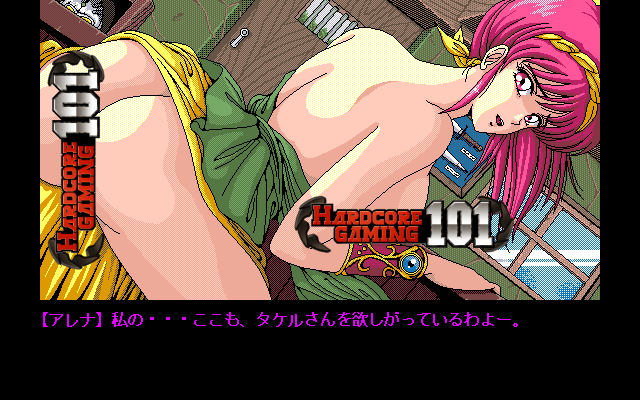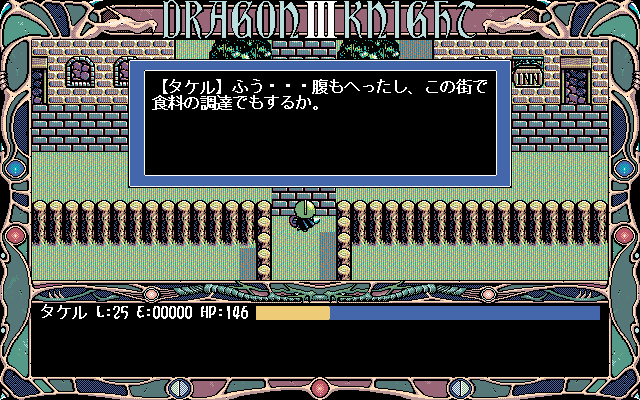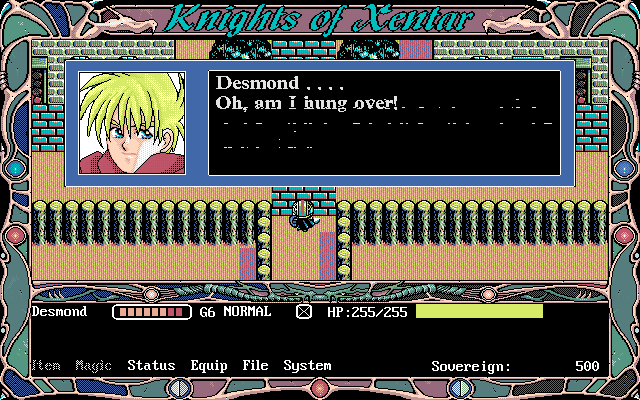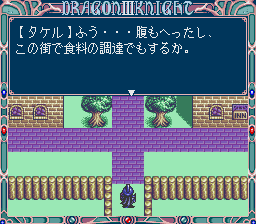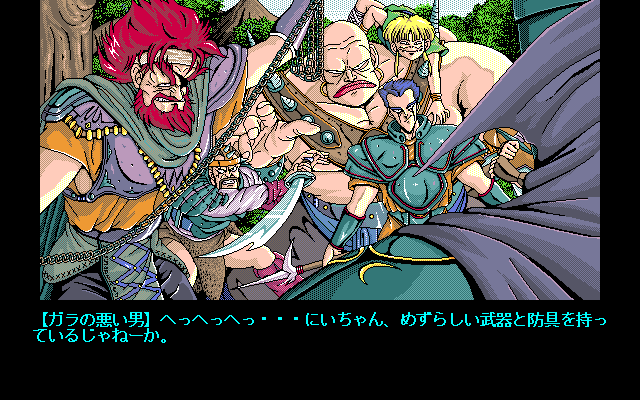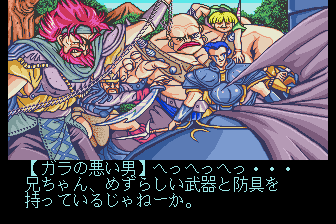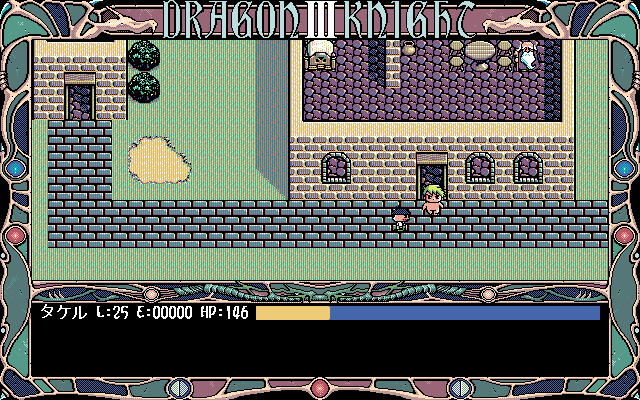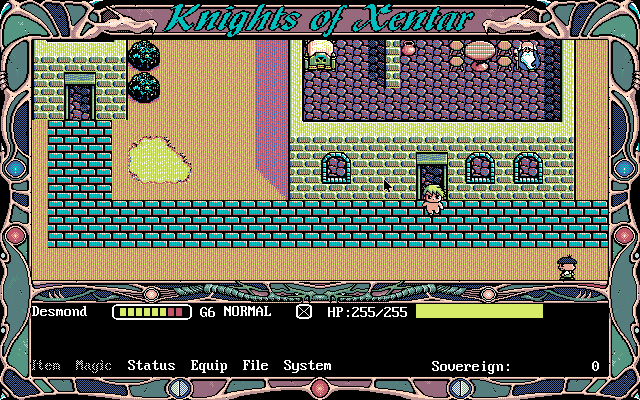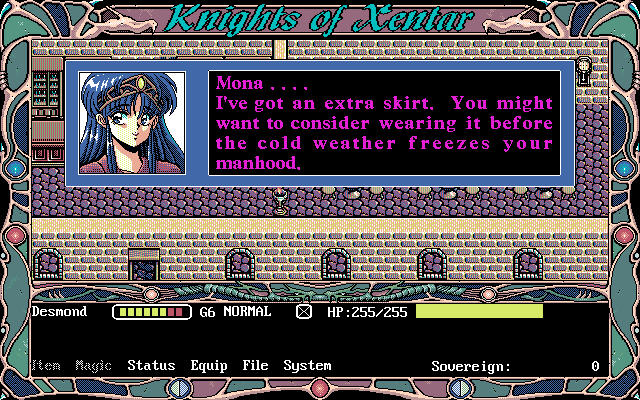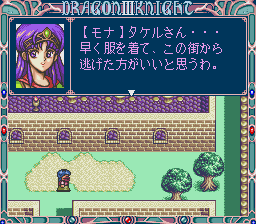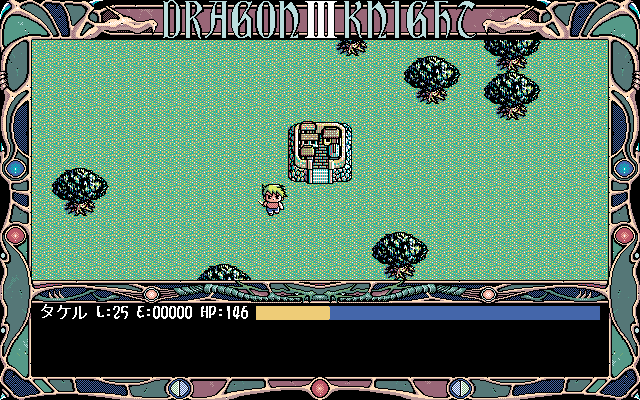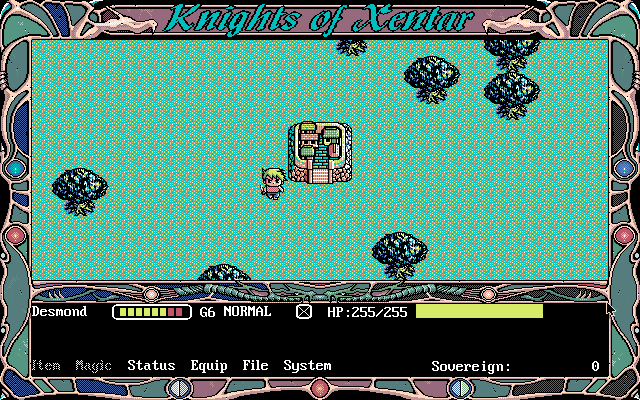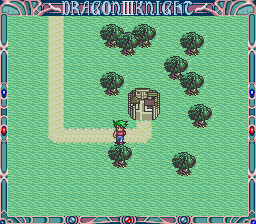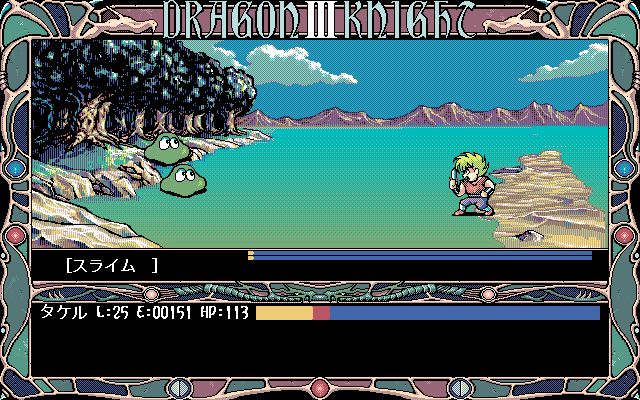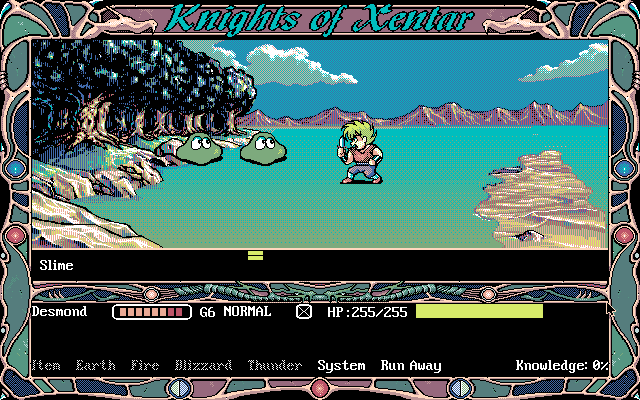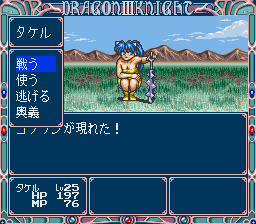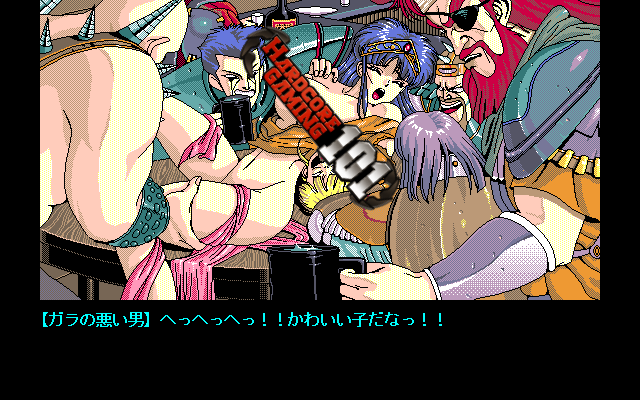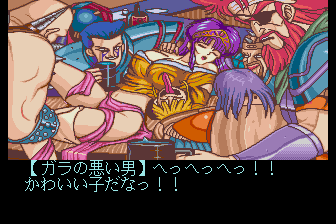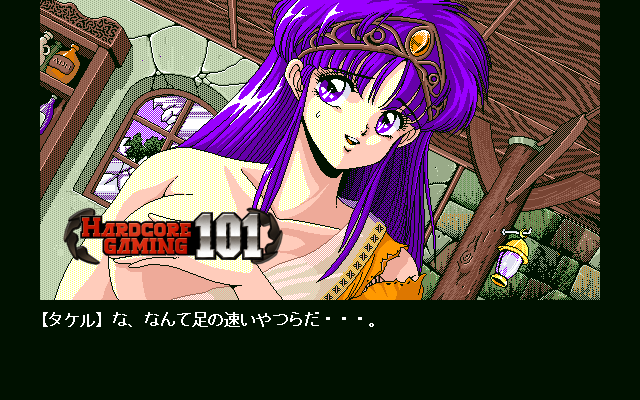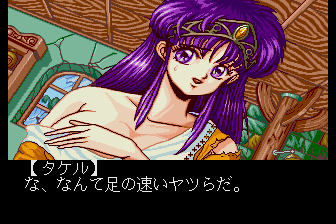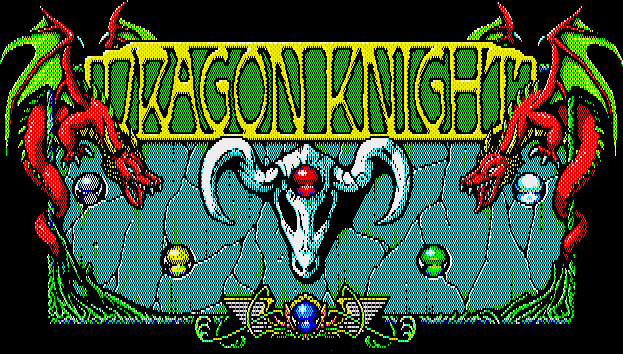
|
Page 1: |
Page 2: |
Page 3: |
WARNING: This article is about erotic games and very much Not Safe For Work. Overly explicit elements are hidden behind an extra click, but it's nonetheless not suitable for browsing in a public environment or for anyone who is not prepared to see exploitative erotica.
A sequel wasn't planned when Elf made the first Dragon Knight, but the huge popularity and strong fan demand prompted them to start working on one immediately, and it got released just one year after the first game.
Takeru, having lost a bet against the traveling merchant Baan, is forced to go to the town of Phoenix to deliver a scripture in time of a wedding ceremony. He arrives safely, delivers the scripture to the town elder, and decides to spend the night there. The next morning, he finds all the town women missing. After trying to make sense of what happened, the elder explains that Phoenix used to be under the rule of two opposing factions 300 years ago, the Witches clan and the Dragon Knights clan. One day, the dragon knights made a surprise attack against the witches, which resulted in a battle that is said to have lasted three long days. By the dawn of the fourth day, both clans had disappeared, and only humans remained in the land. However, three years ago, Mesaanya, a descendant of the witches appeared again, and she wouldn't allow women and men to fall in love as long as she was around. The Witches were a clan of women and the Dragon Knights a clan of men, and she couldn't forgive men for what they did to her ancestors. Seeing the elder's daughter had broken that taboo, she stole the scripture Takeru delivered, kidnapped every women in town, and turned them into monsters. Takeru is asked for help in getting the scripture back, which would allow them to turn the women back into humans. He isn't eager to help, but eventually accepts and heads for the witch's tower.
Characters

Baan
A traveling merchant, who makes Takeru go to Phoenix in his place. He uses the money Takeru owes him as a pretext, but actually has other motives to avoid going to the town. He later joins Takeru's party to help him save the town's women. Voiced by Banjo Ginga in the PC Engine version.

Sophia
The third party member, a sorceress who conveniently appears in the village when Takeru and Baan need to find a magic user in order to continue investigating the tower. Voiced by Sumi Shimamoto in the PC Engine version.

Kate
The town elder's daughter. She has fallen in love with Pierrot, a young man visiting the town, and both have promised to marry each other. Voiced by Aya Hisakawa in the PC Engine version.

Town Elder
He asks Takeru for help when the town women get turned into monsters. He's been trying to find a way to defeat Mesaanya with no successs. Voiced by Koji Yada in the PC Engine version.

Mesaanya
A descendent of the Witches. When she first arrived at Phoenix she pretended to be a nice person so the town people would open up to her, but eventually revealed her true intentions and made most of the men run away from Phoenix. Voiced by Yumi Nakatani in the PC Engine version.
Most of the basic game mechanics remain the same in Dragon Knight II, the biggest change being the addition of other party members, making up a party of three, but battles still play out the same. The player is still only able to give out one command in each turn, with Takeru in charge of physical attacks and using items, Baan just automatically attacking every turn, and Sophia using the available magic spells. But using magic in battles is useless unless you're in need of healing, so leaving the enter key pressed down while Takeru and Baan kill the enemy is the best strategy for almost every battle in the game.
The main objective this time around is to turn all the monster girls back into humans, so every enemy you find in the tower is one of those girls. This means battles only have one enemy at a time, opposed to the multiple enemies in the first game. The player needs to find pages of the scripture inside the tower, and each page allows turning a specific monster back into human again, otherwise they'll just run away (but still give exp and money) when you beat them in battles. There are also no bosses except for the final one, which makes for an easier game all around.
Dragon Knight II (PC-98)
Despite all this, it still feels like a big improvement over the first game, mainly thanks to the more lively script and better developed characters. The interactions between Takeru, Baan and Sophia make exploring the floors all the more entertaining, and each and every NPC also has a lot more personality and lines than the ones in the prequel. There's also a lot more attention paid to the actual plot, which, while still pretty simple, manages to include some surprising moments. It's clear from the get-go that Dragon Knight wasn't initially planned as a series, and the world and backstory to the dragon knights wasn't very developed at first. The sequel addresses some of that, and even leaves some plot threads open for the third game.
Elf also decided it was important to expand the erotic elements. This time around, every girl Takeru saves ends up paying him a visit at night when the player rests at the inn, as they want to "express their gratitude". It's all done in a silly way, and these moments are never taken too seriously.
Dragon Knight II (PC-98)
Visually, it's at the same level as the first game, although battles now feature large CG art for the enemies instead of small sprites. Astonishingly each monster girl has her own unique battle theme - all thirty of them. Most aren't very good tracks, but it's an impressive effort nonetheless.
Two years later, NEC Avenue released a port for the PC Engine. This was an important moment for the eroge industry, as it was the first time someone ported an erotic game for home consoles. People were doubtful there was anything worth seeing in a censored port, and most still thought it was just the kind of game people played for the sex and nothing else. But Dragon Knight was a popular franchise, and NEC decided to take the risk, even going through the trouble of gathering a cast full of some of the most popular voice actors from the 1990s. And it was a success - adult games were finally starting to be seen as something that could be legitimately fun beyond their smut appeal. The port itself is mostly identical to the computer version, although it obviously removes the erotic content. The girls still visit Takeru at night after he saves them, but the scenes end abruptly with no mention of what happens next.
Quick Info:
|
Developer: |
|
|
Publisher: |
|
|
Designer: |
|
|
Genre: |
|
|
Themes: |
Dragon Knight II (PC-98)
Dragon Knight II (PC-98)
Dragon Knight II (PC-98)
Dragon Knight II (PC-98)
Dragon Knight II (PC-98)
Dragon Knight II (PC-98)
Dragon Knight II (PC-98)
Dragon Knight II (PC-98)
Erotic Scenes (click for untouched versions)
Comparison Screenshots
Dragon Knight III (ドラゴンナイトIII) / Knights of Xentar - PC-88, PC-98, X68000, FM-Towns, PC Engine, IBM PC (December 14, 1991)
Takeru's journey continues, and he has just arrived at the town of Deez, only to be assaulted by a group of bandits who steal all of his possessions, including the legendary sword and armor he got at the end of the previous game. He eventually finds out they sold his stuff to the shop in town, and accepts a job from the mayor to drive them away from the nearby mountain so he can get the money he needs to buy them back. But to Takeru's surprise, when he goes to the mountain to meet the bandits, he finds out that their leader is actually a demon. The demon tells Takeru he is well known amongst his kind, and even mocks him for not knowing the reason why he was born, before running away and leaving Takeru dumbfounded. And thus begins Takeru's journey to get his equipment back and uncover his true identity.
Characters

Alsteen
A knight whom Takeru meets while trying to get to the town of Phoenix. He seems to be traveling the world with some clear objective in mind. Voiced by Ryou Horikawa in the PC Engine version.

Don Gabacha
The mayor of Deez. He promises Takeru to give him money to get his equipment back if he gets rid of the bandits living in the mountains west of the town. Voiced by Kenji Utsumi in the PC Engine version.
For Takeru's third and final adventure, Elf decided to change the game system to something completely different from the previous games. This time around, Takeru is controlled from an overhead view, akin to classic console RPGs like Dragon Quest and Final Fantasy, and there's a world map with various towns to visit and explore, including the two towns from the previous games. But unfortunately, it ended up being an uninteresting world. Every town looks mostly the same and there's no real fun to be had in exploring. Most of the game is just spent traveling from town to town in a linear way and without any meaningful deviations, as the only optional stuff available is some few extra sex scenes. Throughout the whole game there's also only one dungeon with an actual puzzle, which involves getting part of the solution from two different NPCs (which can only be done by saving and reloading, as each NPC won't tell you his part of the solution if you've talked to the other NPC first) or finding the whole solution based on a hint from another NPC. Other than that, the dungeons' layouts are all boring and mostly straightforward, a huge contrast to the mazes in the first two games. Overall it's a change for the worse, and the staff clearly wasn't ready to take on a RPG with a big world to explore.
Perhaps feeling that the battle systems in the previous games weren't very good, Elf decided to try an auto-battle system for the third game. The party still has three characters, with Luna, the main heroine from the first game, taking Sophia's place as the magic user. When a battle starts, Takeru and Baan automatically attack and will do so until they kill the enemies or die, but with Luna in the party, the player is given the option to use one of the four available magic spells. Luna has a MP bar that auto-regenerates when time passes, and once a spell is used, the entire bar is depleted and the effects of the spell used are influenced by how much of the bar was filled when it was used. But, as was the case in the other games, the only actually useful magic is the healing spell. In fact, it effectively breaks the game, as the MP bar fills faster than the HP bars deplete. As long as the characters aren't way underleveled, it's practically impossible to die in the game after Luna joins the party, bar the player forgetting to heal when needed. In a way, it's surprising Elf managed to make the battle system even less interesting than it already was.
Dragon Knight III (PC-98)
Despite being the conclusion to Takeru's story, Dragon Knight III's plot doesn't have a lot going for it. The bigger scale of the world is never put to good use, and most of the towns you visit and new characters you meet are irrelevant to the main story, only serving to provide completely random sex scenes, an odd amount of which have a weird Grimm's fairy tale theme going. Other than two or three scenes during the main portion of the game, most of the actual plot is contained in the final dungeon, which makes one wonder if completely changing the game system was really necessary, especially when the execution was so poor. At least the visuals still maintain the same level, and there's some nice effort put into the battle sprites, as each character's look changes depending on what they have equipped, which wasn't all that common at the time. The music still sounds nice too, and the field and battle themes are some of the best in the series.
Shortly before the release, a junior high school student was caught stealing an adult game called Saori: Bishoujo-tachi no Yakata. This later became known as the Saori Incident, and gave a lot of trouble to adult game companies as their games were suddenly in the public eye, and a lot of them didn't care about censoring genitals in their games, something that went against the Japanese law. So Elf decided to release an all-ages version for Dragon Knight III and some of their other titles in light of what happened, which either covers up or omits the erotic images.
Just like they did with Dragon Knight II before, NEC Avenue released their own version in 1994 for the PC Engine. Knowing that the battle system hadn't been well received, they decided to return to a turn-based system with a first-person view. This time you can give commands to each of the three characters individually, and Takeru even has some special attacks and his own MP bar. This makes for the best battle system between the first three games, and definitely an improvement over the original. The staff probably felt that part of the success of the previous game was due to the monster girls, so they decided to change most enemies to monster girls in this version, even though it didn't make any sense in the plot. The sprites used in battle are all fully animated and therefore battles are more visually engaging. The field sprites are also a bit taller and better looking, but not enough to make much of a difference. There are some CDDA tracks in the PC Engine version, and they all sound better than their PC counterparts. Unfortunately though, the best tracks are all in PCM audio. But despite the improvements, it still remains a weak game, and there's not a lot anyone could do about it other than completely remaking it from scratch.
Dragon Knight III (PC-98)
Weirdly enough, Dragon Knight III got released in the West as Knights of Xentar. Megatech Software, one of the first companies that tried to release Japanese erotic games in the United States, probably saw the series' popularity in Japan and decided it was worth taking the chance. In the process, they completely rewrote the script, making it a localization reminiscent of the work of Working Designs. All characters and places have different names, and the text is now full of American pop culture references from the 1990s. This version of the game lets the player tweak some of the characters' AI in battles, and even has a redesigned interface, but overall it still plays the same. Megatech also released the game on CD with fully voiced dialogues, but the voice acting is atrocious, as one would expect. The Western versions were censored by default, but there were patches to restore all sex scenes.
All things considered, it's no wonder Dragon Knight III is generally considered the weakest entry in the series, and a disappointing way to end Takeru's journey. Not the conclusion fans expected for the series that revolutionized the industry. But thankfully, it didn't end here, and Elf ended up releasing a new sequel three years later.
Quick Info:
|
Developer: |
|
|
Publisher: |
|
|
Designer: |
|
|
Genre: |
|
|
Themes: |
Dragon Knight III (PC-98)
Dragon Knight III (PC-98)
Dragon Knight III (PC-98)
Dragon Knight III (PC-98)
Dragon Knight III (PC-98)
Dragon Knight III (PC-98)
Dragon Knight III (PC-98)
Dragon Knight III (PC-98)
Erotic Scenes (click for untouched versions)
Comparison Screenshots
|
Page 1: |
Page 2: |
Page 3: |
